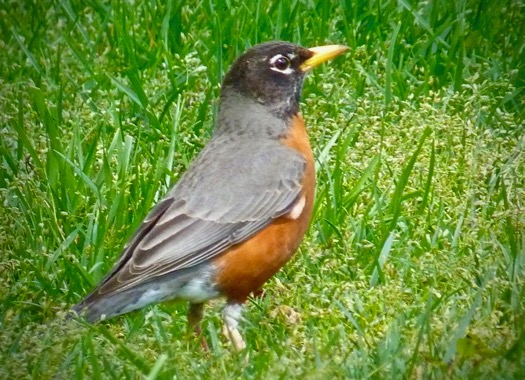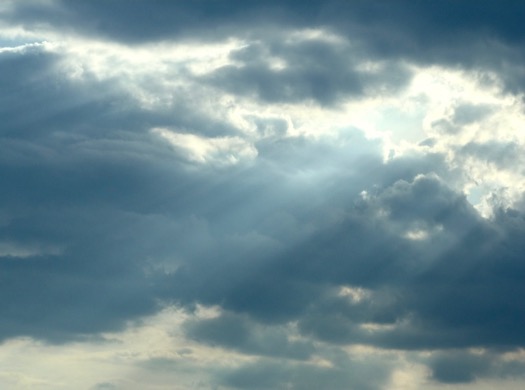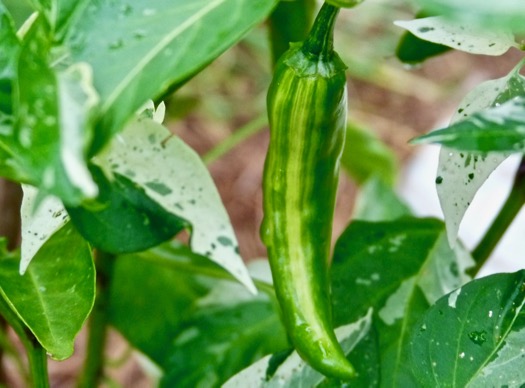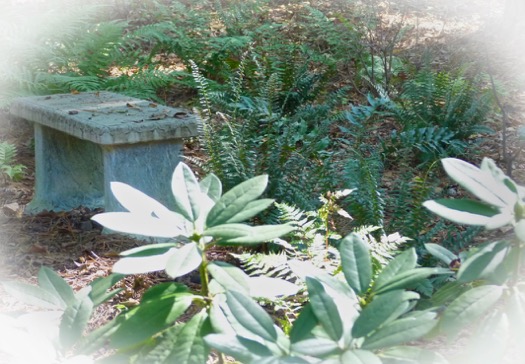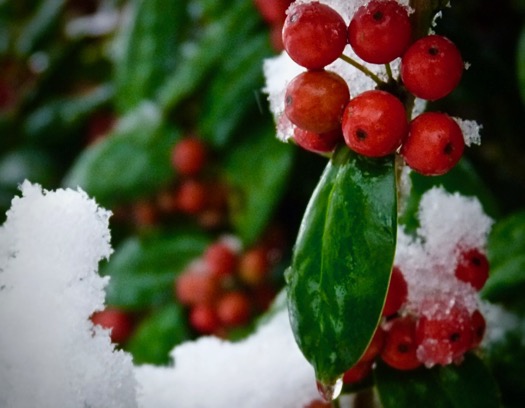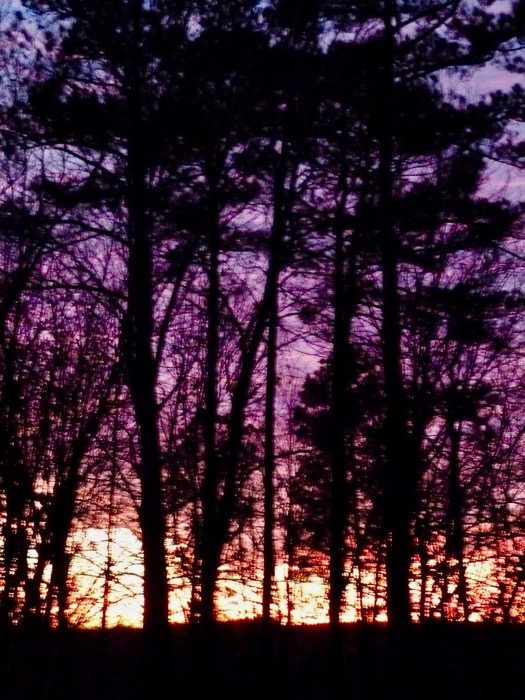Plant Evergreens for Winter Interest
 Sunday, January 14, 2018 at 6:00AM
Sunday, January 14, 2018 at 6:00AM We are in deep winter now. The zoysia grass has faded to tan; a sea of dead leaves covers the floor of the woodlands, while brown and gray trunks and branches create a tangled mosaic against gray skies. It would be altogether drab and somewhat depressing, except for the evergreens.
My marvelous evergreens! Flowers draw admiration and attention to the garden through much of the year (and some evergreen shrubs are most noted for their flowers). Brightly colored leaves dominate fall. But as winter takes hold, the evergreens take center stage as they contribute structure and interest.
Imagine this scene in the woodland garden without the evergreens:
Or this view through the Jasmine arch looking across the front garden. The Confederate Jasmine (Trachelospermum jasminoides) has proved evergreen in my USDA hardiness zone 7b/8a, though it did get zapped the year we had temps in the single digits: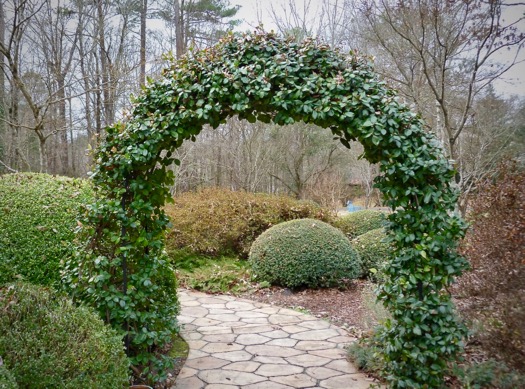
Here is a look at many of the evergreens in my garden. I have provided links when there are previous posts that provide more in-depth information. Most of these are in fact green, but notice the variety of leaf shapes, textures and shades of green. One can create a lot of interest by combining these.
 Above, clockwise beginning top left: Gardenia - I have three different varieties. This one is Gardenia jasmoinedes; Dwarf Japanese cedar (Cryptomeria japonica 'Tansu'), a delightful slow-growing dwarf in the woodland garden; Dystilium 'Vintage Jade'; Deodar Cedar - another plant of which I have several varieties. This one is Cedrus deodara 'Feelin' Blue.' Cold weather brings out its amazing blue color.
Above, clockwise beginning top left: Gardenia - I have three different varieties. This one is Gardenia jasmoinedes; Dwarf Japanese cedar (Cryptomeria japonica 'Tansu'), a delightful slow-growing dwarf in the woodland garden; Dystilium 'Vintage Jade'; Deodar Cedar - another plant of which I have several varieties. This one is Cedrus deodara 'Feelin' Blue.' Cold weather brings out its amazing blue color.
Below is another form of Cryptomeria japonica: Cryptomeria japonica var. sinensis 'Radicans.' I get a lot of compliments on this tree. Wasn't it beautiful last month when it was frosted with snow?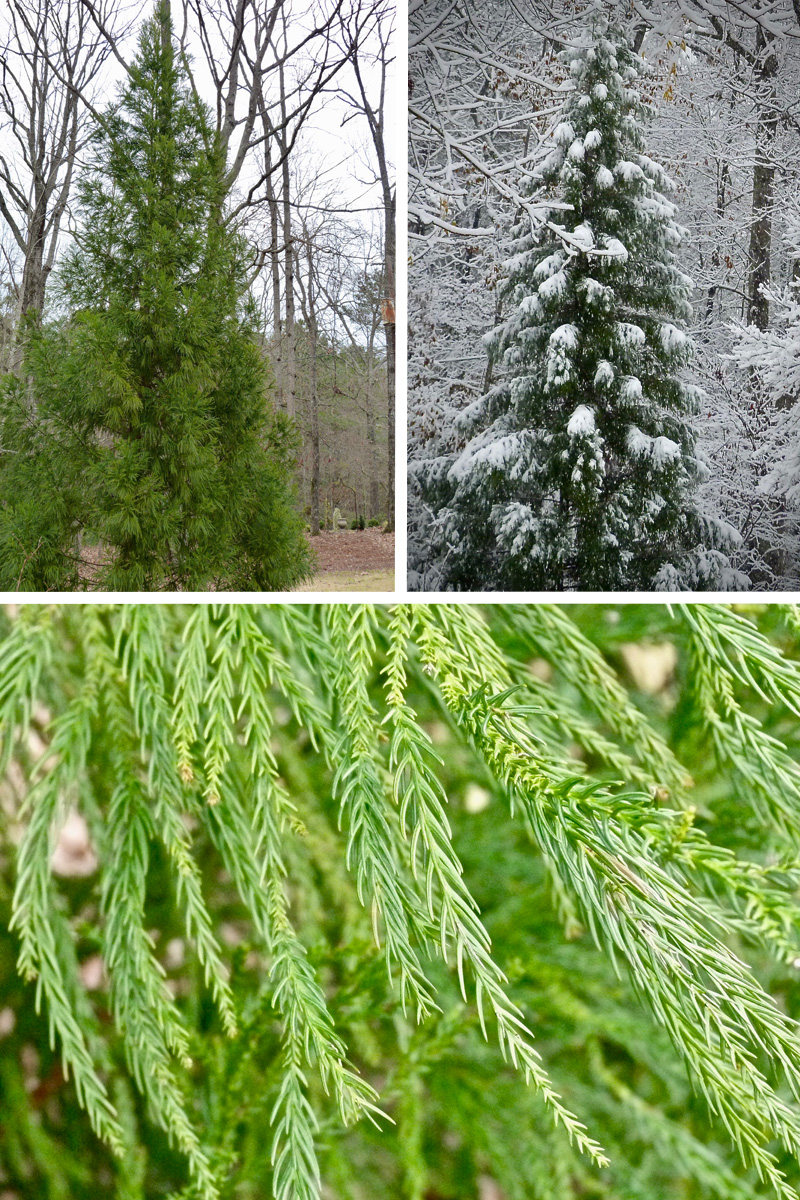
Below, clockwise from top left, are Pittosporum tobira 'Variegata'; Florida Anise - I have two varieties. This one is Illicium parviflorum 'Florida Sunshine'; Loropetalum - I have three types of these. This one is the very dwarf Loropetalum chinensis 'Purple Pixie'; Camellia japonica 'Gunsmoke.' I have about a half dozen varieties of camellia. I wrote a post on 'Leslie Ann' that will also give you general information about all camellias.

 Above is a shot of Variegated Japanese Pittosporum growing in front of Camellia 'Gunsmoke.'
Above is a shot of Variegated Japanese Pittosporum growing in front of Camellia 'Gunsmoke.'
Below is Burford Holly, Ilex cornuta 'Burfordii'. It produces abundant berries without a partner; it had lots more berries before I raided it for Christmas. This one is the dwarf and is about 15 feet tall!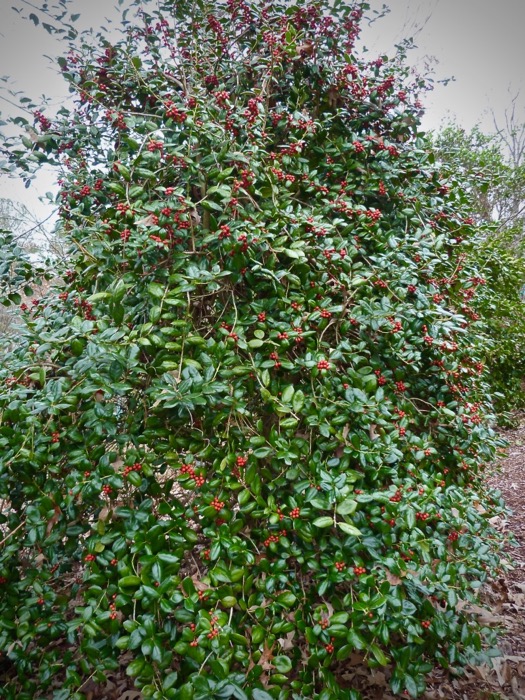
 Above, clockwise from top left: Yaupon holly, Ilex vomitoria - I have the tree form, the dwarf, which is a boxwood look-alike, and the weeping variety. They are all extremely durable and great for wildlife; Juniperus pfitzeriana 'Mon San'; Arizona cypress; Chamaecyparis obtusa 'Filicoides Aurea.'
Above, clockwise from top left: Yaupon holly, Ilex vomitoria - I have the tree form, the dwarf, which is a boxwood look-alike, and the weeping variety. They are all extremely durable and great for wildlife; Juniperus pfitzeriana 'Mon San'; Arizona cypress; Chamaecyparis obtusa 'Filicoides Aurea.'
 Above, clockwise from top left: Rhododendron; Azalea - I have numerous evergreen azaleas (and quite a few native deciduous ones), and a few rhododendrons. The link will tell you the difference between Rhododendrons and azaleas and how to plant and care for them; Aucuba japonica 'Variagata'; Pieris japonica 'Cavatine'. Pieris also goes by the name Japanese andromeda and lily-of-the-valley shrub. I have two other types of Pieris in addition to 'Cavatine,' which is my favorite.
Above, clockwise from top left: Rhododendron; Azalea - I have numerous evergreen azaleas (and quite a few native deciduous ones), and a few rhododendrons. The link will tell you the difference between Rhododendrons and azaleas and how to plant and care for them; Aucuba japonica 'Variagata'; Pieris japonica 'Cavatine'. Pieris also goes by the name Japanese andromeda and lily-of-the-valley shrub. I have two other types of Pieris in addition to 'Cavatine,' which is my favorite.
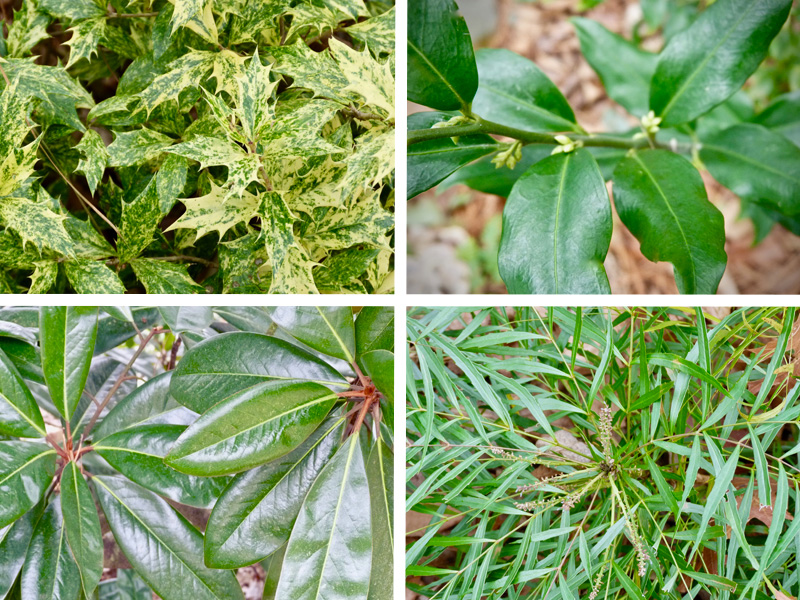 Above, clockwise from top left: Osmanthus heterophyllus 'Goshiki' (called Variegated False Holly); Tea Olive - also a type of osmanthus, but it looks completely different and, unlike the variegated one, it is fragrant. The link will tell you about both; Mahonia 'Soft caress'; Magnolia grandiflora, or Southern Magnolia, the great iconic tree of the South.
Above, clockwise from top left: Osmanthus heterophyllus 'Goshiki' (called Variegated False Holly); Tea Olive - also a type of osmanthus, but it looks completely different and, unlike the variegated one, it is fragrant. The link will tell you about both; Mahonia 'Soft caress'; Magnolia grandiflora, or Southern Magnolia, the great iconic tree of the South.
 Above, clockwise from top left: Cast Iron Plant, Aspidistra elatior, lives up to its tough name; Canadian Hemlock will grow this far south but not much farther; Boxwood, Buxus sempervirens - it grows more slowly than it's unrelated look-alike Dwarf Yaupon Holly; Rosemary.
Above, clockwise from top left: Cast Iron Plant, Aspidistra elatior, lives up to its tough name; Canadian Hemlock will grow this far south but not much farther; Boxwood, Buxus sempervirens - it grows more slowly than it's unrelated look-alike Dwarf Yaupon Holly; Rosemary.
 Above, clockwise from top left: Yew - I have both a spreading and an upright variety; Indian Holly Fern, Arachniodes simplicior 'Variegata'; Holly Fern, Cyrtomium falcatum. This perennial fern is evergreen in my area; Autumn fern, Dryopteris erythrosora, is another perennial fern that is evergreen here. For secrets to growing great ferns, see my post, Successfully Growing Ferns in My Garden.
Above, clockwise from top left: Yew - I have both a spreading and an upright variety; Indian Holly Fern, Arachniodes simplicior 'Variegata'; Holly Fern, Cyrtomium falcatum. This perennial fern is evergreen in my area; Autumn fern, Dryopteris erythrosora, is another perennial fern that is evergreen here. For secrets to growing great ferns, see my post, Successfully Growing Ferns in My Garden.
 Above, clockwise from top left: Blue Rug juniper, Juniperus horizontalis 'Wiltonii'; Moss - I can't imagine my woodland garden without my moss paths; Dwarf Mondo Grass - fantastic ground cover for slopes; Nandina Firepower, a sterile, non invasive form of Nandina domestica.
Above, clockwise from top left: Blue Rug juniper, Juniperus horizontalis 'Wiltonii'; Moss - I can't imagine my woodland garden without my moss paths; Dwarf Mondo Grass - fantastic ground cover for slopes; Nandina Firepower, a sterile, non invasive form of Nandina domestica.
These are not all the evergreens in my garden (which I admit is larger than the average garden!), but I hope I have inspired you to look at these types of plants with greater appreciation. Do you grow evergreens? If not, perhaps you will find a place for some of them in your own space.
Happy gardening! Deb



